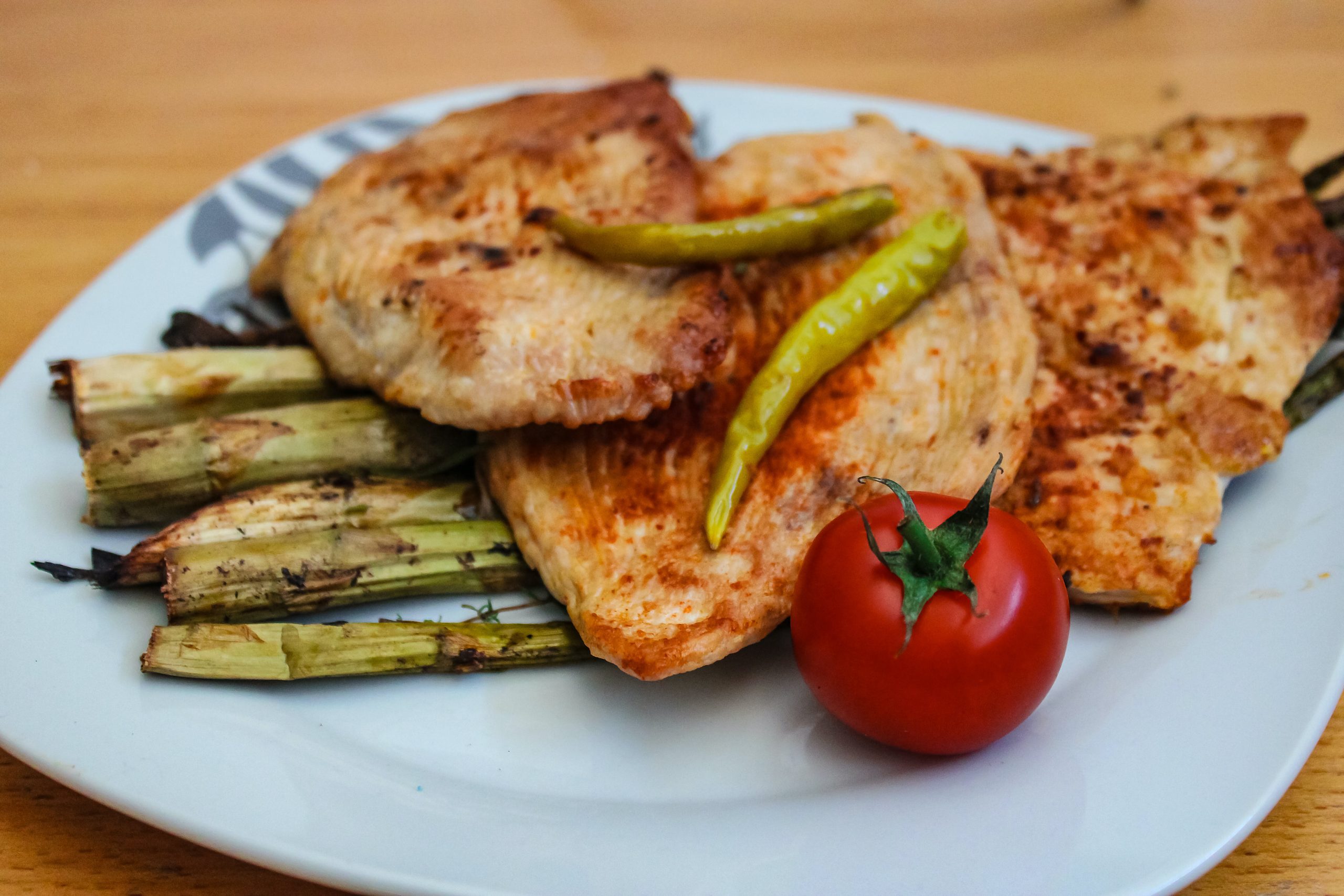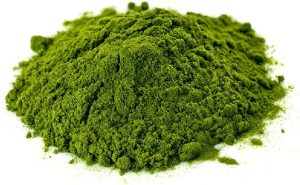
- Overview of Vitamin B2, a.k.a Riboflavin
- Brief History of Vitamin B2, a.k.a Riboflavin
- Functions of Vitamin B2, a.k.a Riboflavin
- Recommended Daily Intake (RDI), Recommended Dietary Allowance (RDA), Adequate Intake (AI), or Reference Nutrient Intake (RNI) for Vitamin B2, a.k.a Riboflavin
- Deficiency of Vitamin B2, a.k.a Riboflavin
- Food Sources of Vitamin B2, a.k.a Riboflavin and Where to Get It From
- Vitamin B2, a.k.a Riboflavin and Its Interaction with Other Medications
- Websites and Articles to Delve into the Benefits of Vitamin B2, a.k.a Riboflavin
- Disclaimer
Overview of Vitamin B2, a.k.a Riboflavin
Riboflavin, known as vitamin B2, is a water-soluble essential nutrient crucial for various bodily functions. It plays a key role in energy metabolism, assisting in the conversion of carbohydrates, fats, and proteins into energy. Found in foods like dairy products, meat, and leafy greens, riboflavin supports healthy skin, eyes, and nerve functions. As a component of coenzymes FMN and FAD, it contributes to antioxidant defense, protecting cells from oxidative stress. Deficiency can lead to ariboflavinosis, characterized by skin and eye issues. Riboflavin is vital for overall health, and a balanced diet ensures sufficient intake.
Brief History of Vitamin B2, a.k.a Riboflavin
The discovery and identification of vitamin B2, also known as riboflavin, are part of the broader history of the discovery of vitamins. Here’s a brief overview:
- Early 20th Century:
- The concept of vitamins began to emerge in the early 20th century when scientists were investigating deficiency diseases. Researchers observed that certain substances in food, essential for health, were missing in the diets of individuals with specific health conditions.
- Discovery of Riboflavin:
- The isolation and identification of riboflavin can be attributed to the work of English chemist Richard Kuhn. In 1926, Kuhn and his colleagues isolated a yellow-green fluorescent pigment from milk, which they named “lactochrome.” In subsequent years, this compound was identified as a member of the B-vitamin complex and named riboflavin.
- Naming and Structure:
- The name “riboflavin” is derived from its composition, with “ribo” referring to the sugar ribose and “flavin” to the yellow pigment. The chemical structure of riboflavin was determined, and it was recognized as a water-soluble B-vitamin.
- Role in Nutrition:
- Researchers soon discovered that riboflavin played a vital role in nutrition, particularly in energy metabolism. It became clear that a deficiency in riboflavin could lead to conditions like ariboflavinosis, characterized by symptoms such as sore throat, inflammation of the lining of the mouth and tongue, and skin disorders.
- Industrial Production:
- The industrial production of riboflavin began in the 1930s, allowing for its synthesis in large quantities. This contributed to its widespread availability as a dietary supplement and fortification of various food products.
- Advancements in Understanding:
- Over the years, scientific research has further elucidated the functions of riboflavin in the body, including its role as a precursor to coenzymes involved in energy metabolism.
Today, riboflavin is recognized as a crucial component of a balanced diet, and its history is intertwined with the broader understanding of essential nutrients for human health.
Functions of Vitamin B2, a.k.a Riboflavin
Vitamin B2, also known as riboflavin, serves several important functions in the body. Here are key roles of vitamin B2:
- Energy Metabolism:
- Riboflavin is a component of two coenzymes: flavin mononucleotide (FMN) and flavin adenine dinucleotide (FAD). These coenzymes play a crucial role in the metabolism of carbohydrates, fats, and proteins. They act as electron carriers in various metabolic reactions, facilitating the conversion of nutrients into energy.
- Cellular Growth and Development:
- Riboflavin is involved in processes related to cellular growth and development. It plays a role in the synthesis of new cells and tissues, contributing to overall growth and maintenance of the body.
- Antioxidant Defense:
- As part of the electron transport chain, FMN and FAD contribute to antioxidant defense. They participate in reactions that help neutralize harmful free radicals, reducing oxidative stress and protecting cells from damage.
- Skin and Eye Health:
- Riboflavin is essential for maintaining healthy skin, eyes, and mucous membranes. It contributes to the health of the skin by promoting cell growth and repair.
- Red Blood Cell Formation:
- Riboflavin is involved in the production of red blood cells (erythrocytes). Adequate levels of riboflavin contribute to the synthesis of hemoglobin, the protein responsible for transporting oxygen in the blood.
- Nervous System Function:
- The coenzymes FMN and FAD play a role in the proper functioning of the nervous system. They are involved in the metabolism of neurotransmitters, which are essential for transmitting signals between nerve cells.
- Drug Metabolism:
- Riboflavin is involved in the metabolism of certain drugs and toxins in the liver. It helps in the detoxification process by participating in the conversion of drugs into more water-soluble forms for elimination from the body.
- Maintenance of Healthy Vision:
- Riboflavin is associated with maintaining healthy vision. It plays a role in preventing conditions like cataracts and may contribute to the health of the cornea.
- Conversion of Tryptophan:
- Riboflavin is involved in the conversion of tryptophan to niacin (vitamin B3) in the body. This conversion is essential for ensuring an adequate supply of niacin.
Ensuring an adequate intake of riboflavin through a balanced diet is important for supporting these vital functions in the body. Common dietary sources of vitamin B2 include dairy products, lean meats, green leafy vegetables, eggs, and enriched cereals.
Recommended Daily Intake (RDI), Recommended Dietary Allowance (RDA), Adequate Intake (AI), or Reference Nutrient Intake (RNI) for Vitamin B2, a.k.a Riboflavin
The recommended daily intake of vitamin B2, also known as riboflavin, varies by age, sex, and life stage. The term “Recommended Daily Intake” (RDI) is often used for vitamins and minerals. However, the specific term used can depend on the country or organization providing the guidelines. In the United States, the Recommended Dietary Allowance (RDA) is commonly used, while other countries may use terms like Adequate Intake (AI) or Reference Nutrient Intake (RNI).
As of my last knowledge update in January 2023, here are the RDAs for vitamin B2 according to the United States National Institutes of Health (NIH):
- Infants (0-12 months): 0.3-0.4 milligrams (mg) per day
- Children (1-18 years): 0.5-1.3 mg per day
- Adults (19 years and older): 1.1-1.3 mg per day
- Pregnant women: 1.4 mg per day
- Breastfeeding women: 1.6 mg per day
It’s important to note that these values can be subject to updates, and guidelines may vary in different regions. Always refer to the most recent dietary guidelines or consult with a healthcare professional for personalized advice, especially if you have specific health conditions or dietary concerns. Riboflavin is water-soluble and not stored in the body for long periods, so a consistent intake through the diet is important.
Deficiency of Vitamin B2, a.k.a Riboflavin
A deficiency of vitamin B2, also known as riboflavin deficiency, is relatively uncommon in developed countries due to the presence of this vitamin in a variety of foods. However, when it does occur, it can lead to a condition known as ariboflavinosis. Here are some common symptoms and effects of riboflavin deficiency:
- Skin Issues:
- Ariboflavinosis may manifest as skin problems, including dermatitis (inflammation of the skin), especially around the nose, mouth, and corners of the eyes. Cracks and redness on the outsides of the lips (cheilosis) and inflammation of the tongue (magenta tongue) can also occur.
- Eye Disorders:
- Sensitivity to light (photophobia) and a gritty feeling in the eyes are symptoms associated with riboflavin deficiency. In severe cases, there may be inflammation and redness of the eyes.
- Sore Throat and Swelling:
- Individuals with riboflavin deficiency may experience a sore throat, as well as redness and swelling of the lining of the mouth and throat.
- Migraines and Headaches:
- Some studies suggest a potential link between riboflavin deficiency and an increased frequency of migraines and headaches.
- Anemia:
- Riboflavin is involved in the production of red blood cells, and deficiency can contribute to a type of anemia.
- Fatigue and Weakness:
- Since riboflavin is essential for energy metabolism, a deficiency may lead to feelings of fatigue and weakness.
- Digestive Issues:
- Ariboflavinosis may cause digestive problems, including difficulty in absorbing nutrients and potential changes in the gastrointestinal tract.
It’s important to note that riboflavin deficiency is often associated with deficiencies in other B vitamins, and symptoms can overlap with those of other nutritional deficiencies. Diagnosing riboflavin deficiency is typically done through a combination of clinical symptoms, dietary assessment, and, in some cases, laboratory tests.
Riboflavin deficiency can be caused by inadequate dietary intake, malabsorption issues, certain medical conditions, or an increased need for the vitamin, such as during pregnancy or lactation. Treating deficiency involves increasing dietary intake through supplementation or dietary changes. As with any health concern, individuals experiencing symptoms of deficiency should consult with a healthcare professional for proper diagnosis and treatment.
Food Sources of Vitamin B2, a.k.a Riboflavin and Where to Get It From
Vitamin B2, also known as riboflavin, is found in a variety of foods, both animal and plant-based. Including these sources in your diet can help ensure an adequate intake of vitamin B2. Here are common food sources of vitamin B2:
- Meat:
- Beef, lamb, and pork are good sources of riboflavin.
- Poultry:
- Chicken and turkey contain riboflavin.
- Fish:
- Fish such as salmon, trout, and mackerel are rich in vitamin B2.
- Dairy Products:
- Milk, yogurt, and cheese are excellent sources of riboflavin.
- Eggs:
- Eggs, particularly the yolk, contain vitamin B2.
- Leafy Green Vegetables:
- Spinach, kale, and other leafy greens provide riboflavin.
- Nuts and Seeds:
- Almonds, sunflower seeds, and pistachios are good sources.
- Legumes:
- Lentils, chickpeas, and soybeans contain riboflavin.
- Whole Grains:
- Whole grains like brown rice, oats, and whole wheat are rich in vitamin B2.
- Fortified Foods:
- Some processed foods, such as cereals and nutritional yeast, may be fortified with riboflavin.
Including a variety of these foods in your diet can help you meet your daily requirements for vitamin B2. Keep in mind that riboflavin is water-soluble, and cooking methods that involve water can result in some loss of the vitamin. To maximize riboflavin intake, consider incorporating a diverse range of nutrient-rich foods into your meals.
If you have specific dietary restrictions or concerns about your vitamin B2 intake, consulting with a healthcare professional or a registered dietitian can provide personalized advice.
Vitamin B2, a.k.a Riboflavin and Its Interaction with Other Medications
Vitamin B2, also known as riboflavin, is generally considered safe and is not known to have significant interactions with most medications. It is a water-soluble vitamin, and excess amounts are usually excreted in urine rather than stored in the body. However, there are a few considerations to keep in mind:
- Anticholinergic Medications:
- High doses of riboflavin may interfere with the activity of anticholinergic medications. Anticholinergic drugs are used to treat various conditions, including allergies, gastrointestinal disorders, and certain respiratory conditions.
- Tricyclic Antidepressants (TCAs):
- Riboflavin supplements might reduce the effectiveness of tricyclic antidepressants (TCAs) such as amitriptyline. If you are taking TCAs, it’s advisable to discuss riboflavin supplementation with your healthcare provider.
- Probenecid:
- Probenecid, a medication used to treat gout, may reduce the absorption of riboflavin in the intestines. If you are taking probenecid, your healthcare provider may monitor your riboflavin levels.
- Phenobarbital:
- Phenobarbital, an anticonvulsant medication, may increase the breakdown of riboflavin in the body. This could potentially lead to lower riboflavin levels.
It’s important to note that these interactions are generally not considered significant for individuals with a balanced diet and normal vitamin B2 intake from food sources. If you are considering riboflavin supplements or if you have concerns about potential interactions, it’s crucial to consult with your healthcare provider. They can provide guidance based on your specific health status, medications, and individual needs.
As with any supplement or medication, it’s important to communicate openly with your healthcare provider about all the substances you are taking, including vitamins and minerals, to ensure comprehensive and personalized care.
Websites and Articles to Delve into the Benefits of Vitamin B2, a.k.a Riboflavin
Here’s a brief summary of information about Vitamin B2 (Riboflavin) from the provided websites:
- Mount Sinai:
- The page discusses Vitamin B2, also known as riboflavin, and its role in helping the body metabolize fats and proteins.
- Medical News Today:
- The article covers various aspects of riboflavin, including its functions, sources, recommended daily intake, and potential health benefits.
- It emphasizes the role of riboflavin in energy production and maintaining healthy skin and vision.
- Harvard T.H. Chan School of Public Health:
- The Harvard Nutrition Source page provides an overview of riboflavin, highlighting its importance for energy metabolism and its presence in various food sources.
- Wikipedia:
- The Wikipedia page offers a comprehensive overview of riboflavin, covering its chemical structure, functions in the body, food sources, and related health conditions.
- Healthline:
- The Healthline article explores what Vitamin B2 (riboflavin) does in the body, its functions in energy metabolism, and potential symptoms of deficiency.
- Cleveland Clinic:
- The Cleveland Clinic’s page on Vitamin B2 provides information on its functions, dietary sources, and potential symptoms of riboflavin deficiency.
- WebMD:
- The WebMD page offers information on riboflavin, including its uses, side effects, interactions, and recommended dietary sources.
- MedlinePlus:
- The MedlinePlus article covers riboflavin, its functions, dietary sources, recommended daily intake, and potential health implications of deficiency.
- Holland & Barrett:
- The article on Holland & Barrett’s Health Hub discusses Vitamin B2 as essential for the body’s energy and provides information on its functions and dietary sources.
- Verywell Fit:
- The Verywell Fit page covers riboflavin requirements, dietary sources, and its role in energy production.
- Examine.com:
- The Examine.com page provides a scientific overview of Vitamin B2, discussing its functions, benefits, and potential supplementation.
- Verywell Health:
- The Verywell Health article explores the benefits of riboflavin, symptoms of deficiency, and dietary sources.
- Dr. Axe:
- The Dr. Axe article covers various aspects of riboflavin, including its functions, benefits, and dietary sources.
These summaries offer a snapshot of the information available on each website. For more in-depth details, you may want to visit the respective websites directly.
Disclaimer
The information is solely provided for educational purposes. It is not intended to diagnose, treat, cure, or prevent any disease. Seek the advice of your physician or qualified healthcare provider with any questions you may have regarding a medical condition at all times. Never disregard professional medical advice because of something you have read or learned from this article.






